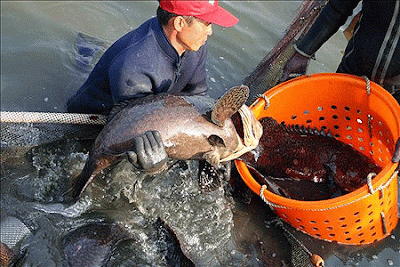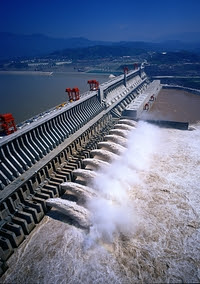During this festive season, when
the world is celebrating the birth of a savior and redeemer, Jesus Christ, it
will be befitting that we retrace and dedicate his ethos with regard to
investment and philanthropy. In articulating the aforementioned the overarching
question shall be, is there any relationship between investing and
spirituality? The following is extracted verbatim from the unpublished work of
Robert Mudzvova entitled, Investment World
Demystified©.
 |
| The birth of Jesus Christ in Bethlehem |
At face value, one would be
forgiven to think that spirituality and investment are completely incompatible.
The rich are seen as the curse for the poor. Many rich people mistakenly think
that the poor are responsible for their impoverishment. The struggle between
the poor and the rich started with the advent of capital. There are certain
examples I have given in this book which amplify the “heartless” of the rich
and the vulnerabilities of the poorest of the poor.
The struggle between the poor and the
rich was therefore the subject and scope of the great essay by the godfather of
philanthropy, Andrew Carnegie called the Gospel
of the Wealth, of which the following was his submission:
“This, then, is held to be the duty
of the man of Wealth: First, to set an example of modest, unostentatious
living, shunning display or extravagance; to provide moderately for the
legitimate wants of those dependent upon him; and after doing so to consider
all surplus revenues which come to him simply as trust funds, which he is
called upon to administer, and strictly bound as a matter of duty to administer
in the manner which, in his judgment, is best calculated to produce the most
beneficial results for the community--the man of wealth thus becoming the mere
agent and trustee for his poorer brethren, bringing to their service his
superior wisdom, experience and ability to administer, doing for them better
than they would or could do for themselves.”
To Carnegie and indeed all the
Carnegiests the world over, the rich will, “…but a trustee for the poor;
entrusted for a season with a great part of the increased wealth of the
community, but administering it for the community far better than it could or
would have done for itself.”
However, the theme of this chapter
is to draw parallels between spirituality and investing. Were the greatest
philanthropists’ motives out of the good of mankind or the fear of hell or
both?
The work of Carnegie is drawn from Biblical
texts and there are several percepts to support this, “….Angels (in heaven)
derive their happiness, not from laboring for self, but for each other”. And
the basis for his philanthropy could have been motivated by Jesus Christ
himself, when Carnegie asserted that laboring for the good of our fellow human
beings was, “the essence of his (Christ) life and teaching.”
 |
| Andrew Carnegie, the godfather of philanthropy |
Carnegie laid the foundation of
reconciling between the rich and poor by explicitly highlighting the guidelines
for “repatriation” of the wealth accumulated by the rich to the poor. The basis
for his thoughts and of course, his deeds, was that the rich should, where it
is practical to do so, supervise and monitor the distribution of their wealth
to the poor, using the wisdom and experience they exhibited when they were
accumulating their wealth.
The profound ideas of Andrew
Carnegie were indeed applied religiously by John D. Rockefeller Snr. of
Standard Oil fame together with his son, John D. Rockefeller Jr. and ably
assisted by Fredrick T. Gates. Rockefeller foundation was arguably the first
philanthropist organization to be involved in a world-wide organized
philanthropy. The main objective of the foundation was and is, “To promote the
well being of mankind world-wide.” To the Rockefellers and all those that have
benefited from their good cause, the essence of spirituality is abundantly
evident.
These were rich servants of God,
who had good intentions about the generality of mankind, particularly the poor
and the vulnerable, for their wealth came from business acumen and power of
investing and not from thievery or acts of evil.
Perhaps the greatest fear of hell
was shown by Warren E. Buffet, in Berkshire Hathaway’s 2002 Annual report,
where he said, “...Like hell, it easy is to enter and almost impossible to exit.”
But it is true to assert that, he who fears hell is in essence obeying the
teachings and deeds of Christ. Buffet in the same annual report, on giving his
thoughts on corporate governance and corporate disasters which came due to lack
of it, he went deeper into the scriptures when he referred to Jesus Christ’s
teachings, who in Luke 16:2, said “Give an account of thy stewardship, for thou
mayest longer be steward”
So it can be seen that from
Carnegie, through to Rockefeller to Buffet and indeed to Bill and Melinda Gates,
the notion of investing is evidently linked
to spirituality. It is therefore not an irony that Andrew Carnegie the godfather
of philanthropy was the second richest man in the world during the peak of his
investing career only second to John D. Rockefeller Snr, the one who popularize
the idea of wide scale philanthropy. This was in the late 19th
century and early 20th century.
 |
| A youthful John D. Rockefeller Sr. of The Rockefeller Foundation |
Today, Warren E. Buffet the
greatest investor in living memory and indeed the greatest philanthropist of
all time has committed to handover the greater part of his wealth to the Bill
and Melinda Gates’ foundation, arguably making it one of the biggest
foundations in the world. At the time of committing his wealth to the Gates,
Warren was the second richest man, only second to Bill. These great investors
had deep
rooted beliefs in the teachings and deeds of Jesus Christ and that they were
also rich spiritually.
In the Zimbabwe context, there are
many philanthropists who have done a sterling job of assisting the poor. Jairos
Jiri, for example, opened his house to the physically challenged and today his
name is synonymous with empowerment of the physically challenged. We continue
to encourage those who are taking care of the orphaned, the widowed, the
elderly, the sick, the physically challenged and the poor that they continue on
this path, for it is proper and fruitful. God will bless them abundantly. Jesus
Christ encouraged us to help the poor and mentioned several times that poor
have a right to the Kingdom of God.
 |
| Jairos Jiri, Zimbabwean philanthropist who empowered many physically challenged people |
Giving generously to the vulnerable
is as rewarding as successfully reaching the apex of Mount Everest. The
fulfillment got is worth it. It is a legacy for real investors to leave for
future generations and this shall not deplete their wealth, but shall usher new
opportunities for so many investors to flourish and indeed improve the living
conditions of mankind.
We thank most sincerely the
visitors and readers of this blog. Together we are community wishing and hoping
for the betterment of the suffering humankind. Going forward and God willing,
these wishes and hopes shall be concretized into tangibles to endure any form
of turbulence and machination from the wicked.
Have a Merry Christmas and a
blessed and prosperous 2013
God Bless.
I thank you!









